Ready to uncover the mysteries of the past? Contact us today to book your unforgettable ghost tour +1-702-419-0696
A Loving Tribute to Grandma
Celebrating & Honoring the Life of Mary Burns—a compassionate grandmother whose kindness, wisdom, and occasional tough love left a lasting impact on everyone she met.
As a dedicated patient until she was 102 years old, she also took on the role of nurse and trusted confidante—someone you’d always want in your corner.
Mary spent her days at Glore, not just as a resident but as an integral part of the hospital’s very heart, forging deep bonds with both patients and staff.
Her power and influence lasting many years after she was gone
Her presence radiated warmth, strength, and an enduring sense of connection, offering not only comfort but also a steady hand and a sense of control in moments of uncertainty for those around her.
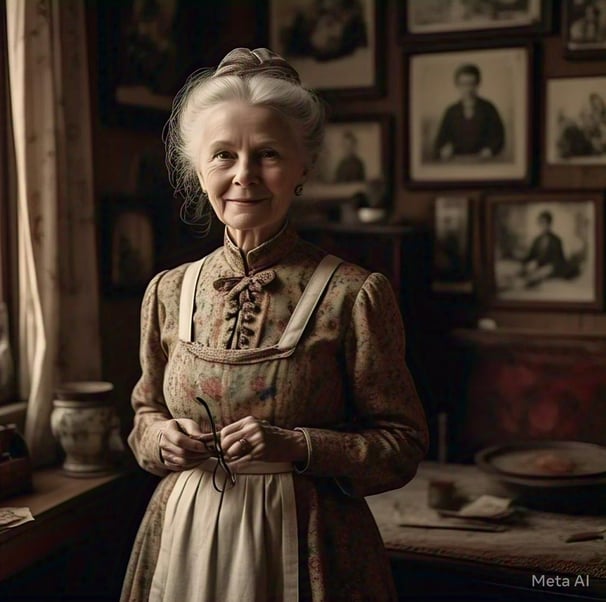

Newspaper Articles:
Celebrating the life of Mary Burns, a kind-hearted grandma who brought joy and wisdom, and had her moments of tough love. In the hospital to the patients and staff workers there.
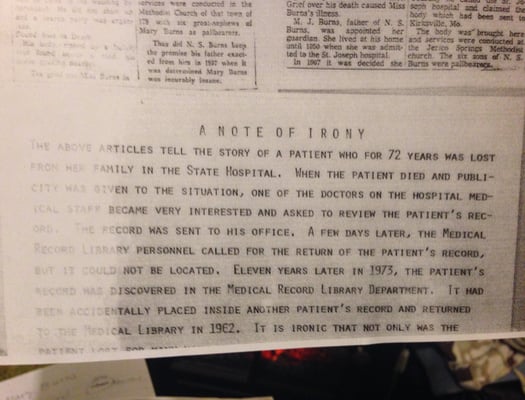

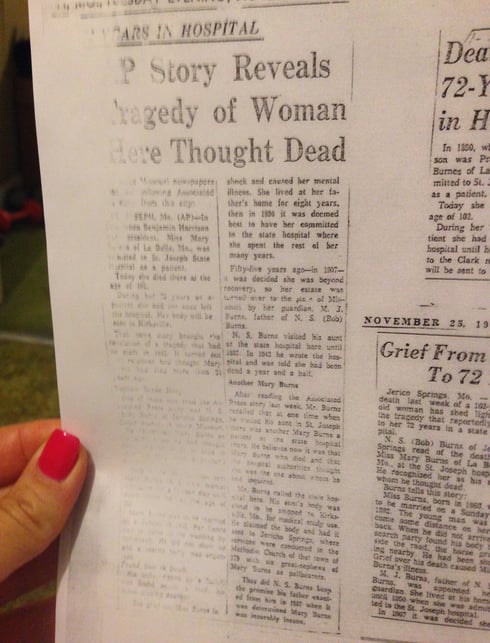



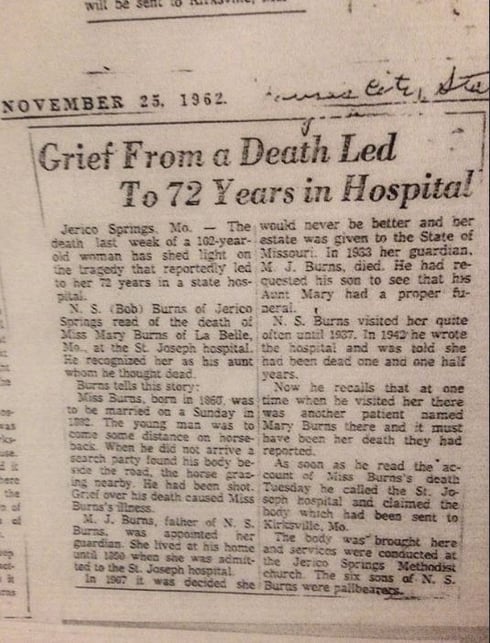

A Loving Tribute to Mary Burns:
The Forgotten Soul of The State Lunatic Asylum No. 2
Story Location ~
The Glore Psychiatric Museum in St. Joseph, Missouri
There are places in this world where time seems to fold in on itself, where echoes of the past are not merely memories but tangible presences. St. Joseph's Glore Museum which is the State Lunatic Asylum No. 2 is one such place—a site where history and hauntings intertwine, and where I met Mary Burns, a spirit who remains tethered to the walls that once confined her.
My encounter with Mary was more than just a fleeting shadow or a whisper in the dark. She made herself known—not with fear - instead, with a sorrow so thick it pressed against me like the weight of forgotten stories begging to be told.
And that's what led me here.
Who was Mary Burns?
Through both paranormal impressions and historical whispers directly from her, I pieced together what I could of her story. Mary was once a patient in the asylum, a woman whose mind and emotions did not conform to the rigid expectations of her time. Whether she suffered from a diagnosed condition or simply fell victim to an era that misunderstood mental health, she was committed against her will. Like so many others, she was trapped in a system designed to contain, not to heal.
Some encounters are more than just fleeting whispers in the dark; they are moments of fate, calling us to listen, to remember, and to act. Mary Burns was one of those moments for me. She found me on my honeymoon, as my husband and I explored St. Joseph, Missouri, unknowingly stepping into a story that would intertwine my life with hers.
I'm usually the one who hunts and finds ghosts. This time it was Mary who hunted and found me.
She was a woman with a strong will, I could feel that much. There was a lingering defiance in the way she reached out, as if she still resented the circumstances that led to her confinement. Yet beneath that resistance, there was a deep well of sorrow. I sensed she had lost something—or someone—before her time inside the asylum. A love that was taken from her? The details remained elusive, yet the emotions were overwhelming. And as I got to know her I grew to love her. And I found out to answers why she was in Glore.
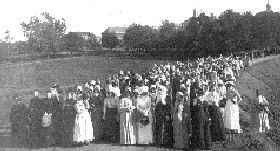

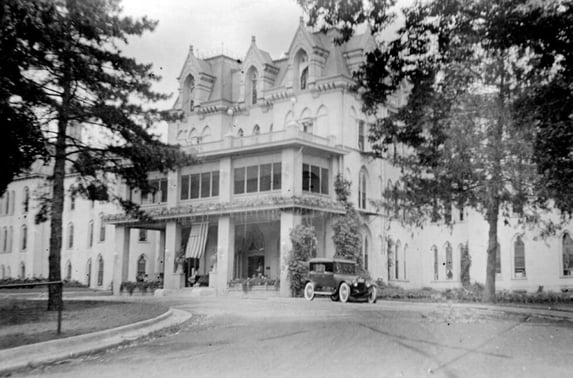

A Call From Beyond
It started with a pamphlet—one among many that advertised local attractions, restaurants, and historic sites. Yet one stood out: The State Lunatic Asylum No. 2 , a former mental institution turned museum, its halls steeped in the lingering presence of those who once lived—and suffered—within its walls.
My husband and I were on our honeymoon, driving through St. Joseph, Missouri, when we picked up brochures of places to drink, dine, and explore. And then, in the midst of them, I saw it—an advertisement for the Glore Mental Institution.
My husband laughed. "Have you ever been to a mental hospital before?" he teased.
"No," I told him, "yet should we go, I know what will happen. As soon as the spirits realize I can hear and see them, they’ll all come forward for help."
He chuckled. "Well, they might never let you out!"
I smiled at the joke, yet in my heart, I knew this was no ordinary visit.
The asylum was vast, a three-story structure, its two wings connected by a Bridgeway upstairs. One side housed the museum, filled with relics of the past, while the other remained an active prison, reserved for the most dangerous criminals.
Beside Glore lay a cemetery, where asylum patients were buried—not by name, but by number. A forbidden ground, guarded by warnings that trespassers would be shot on sight.
As we stood in line at the entrance, the atmosphere felt charged, the air thick with unseen energy. And then, suddenly—
She arrived.
The Encounter
When I first sensed Mary, it was as if the room itself had grown heavier. The air chilled, not with malice, yet with a presence demanding to be acknowledged. A faint pressure brushed my arm, like a touch meant to draw my attention rather than frighten. And then came the whisper—soft, urgent, yet unintelligible.
I tried to listen beyond the veil, to reach out with my own energy. What did she want to say? What did she need? The overwhelming sense I received was the impression of "I never left." Even though those weren't the first words she said to me.
Whether that meant she remained bound to the asylum by trauma, unfinished business, or something more, I do not know. Yet in that moment, I felt her as clearly as she stood beside me, desperate to be heard.
"Mary. My name is Mary Burns." Mary said.
I immediately told my husband, "We have a tag-along and her name is Mary Burns."
He said," What does she want?"
I said, "I don't know. She just said hi and I promised you outside that should anyone come forward to say hi or anything at all then you wanted me to let you know."
We had made an agreement when we first met. He loves and supports and respects me. Yet my husband didn't want to know about it. Nothing paranormal. So I had kept it to myself when around him. Until today. Today he told me he wanted me to involve him. Little would he know that he would change his mind and decide he wanted to be involved. And he would end up being involved in a big way in Mary's Life-after-death!
The First Meeting
Her presence brushed against me. To my left.
She was short, barely reaching my shoulder, with short curly gray hair and a gentle, yet resolute, demeanor. She didn’t hesitate.
Then, as if responding to my thoughts, of wondering where I'd find her Mary whispered again:
"You’ll find me on the third floor. Take the stairs. I don't like the elevator."
She said it with certainty, and I knew she meant it.
When it was our turn to check in, I asked the volunteer receptionist about the name Mary Burns and asked about it being recorded in their history in the museum.
She shook her head. "Mary and Burns are both common names in this area," she said. "And most patients were only assigned numbers. They weren’t listed by name, even in death." And the other thing is that when people came here they never left here. They were usually brought in with one change of clothes to be buried in. Whomever dropped them off would never see them again. That must have been horrible!
Then she added: "But if she was here, you might find something about her on one of the three level of floors."
I knew we would.
As we pulled away from the desk I felt assured Mary would find us or we would find her. I had no idea that it would be within 15 minutes of that moment.
Finding Mary’s Story
We climbed the stairs, feeling traces of other spirits in the stairwell—touching us gently, like wet cob webs- called tag-alongs- whispers of lives long gone. Yet Mary’s presence remained strongest with us still.
The moment we stepped onto the third floor, my breath caught in my throat. As I opened the door it was revealed in front of me an old-fashioned wooden wheelchair.
And sitting on its seat, a framed in newspaper article—all about Mary Burns.
I had goosebumps. The words in black and white told her story, just as she had promised downstairs.
Mary was once a bride-to-be, engaged to be married. And on the day of her wedding, her fiancé never arrived. A search party was sent out, and two miles away, he was found dead—shot, his horse grazing beside him.
Mary lost her mind that day.
Her grief was unbearable, and though she most likely had loving parents, they didn’t know how to help her. In that era, a woman overcome with sorrow, unable to function in society, depressed and angry was seen as "mad."
The solution? Institutionalization.
She was committed at just 18 years old.
She spent 72 years in that asylum. Never left. Never went home.
Her family eventually erased her from memory, moving on with two new children, a new life—without her. By the time of the 1880 census, there were two Mary Burnes's recorded: one white, one black.
My Mary had listed her parents' names, hoping—perhaps—that it would tether her to them, that someone would remember her. But she was removed from all future records, as if she had never existed.
She was truly forgotten and wondered, "Do I exist?"
And yet, she did exist. And I assured you it was true. Even though I still had no idea of how to help her from beyond the grave.
Why She Stays
Mary Burns is not a vengeful spirit. She does not seek to harm or haunt in the way popular ghost stories often describe. Instead, she lingers in remembrance—a soul who was once dismissed, now refusing to be forgotten.
Perhaps she remains as a silent protest, a reminder of the countless women institutionalized for reasons as simple as grief, defiance, or nonconformity. Perhaps she seeks recognition, a voice that history never granted her.
Why She Came to Me
Mary lived her entire life in that asylum, dying there in 1962 at 102 years old. In that time, she went from a patient to something more—a caretaker, a confidante, a source of connection for the thousands of souls who passed through the asylum’s doors.
And yet, in death, she remained unclaimed. No one had ever come back for her.
Until she found me.
She stayed with me for years, visiting me, making her presence known. I didn’t understand why, until a dear friend—who has since passed—told me something that changed everything.
"She wants to be connected to her family."
In that moment, I felt Mary with me, her energy wrapping around me like an embrace. She wanted to be remembered. To belong.
And I knew what I had to do.
I knew I had to re-connect her to her family on the ancestry and genealogy places. Even though she reminded me that it wasn't so much about being connected to her immediate family as much as it was about being connected to her "community with the mental hospital" family.
Giving Mary a Legacy
At the time, it was still possible to perform sacred genealogical work for non-family members. I reached out to the Manti Temple, Utah, where I was able to baptize Mary Burns in proxy, ensuring that she was officially recorded as part of her family.
I did her initiatory work, her endowment, and finally, I sealed her to her parents—Cornelius Burns and Melissa Wilson—for time and all eternity.
It was in the celestial room, surrounded by peace, that I saw something I will never forget.
Thousands of angels.
They filled the space, waiting for Mary. And as the final prayer was said, I felt her presence rise—not just as a ghost leaving a room, but as a soul ascending to her rightful place.
She was finally free. And with her "family". She had been waiting for this moment since before she died.
A Love That Transcends Life
Mary Burns found me when I least expected it. She called, and I answered.
She taught me that even in the deepest of grief, even when the world forgets your name, love can still find you. And now, her name will never be forgotten again.
Someday, when my own journey is complete, I know Mary will be waiting for me on the other side. And when we meet, the first thing I will do is wrap her up in my arms in the biggest hug in the world.
Because she was never lost.
She was just waiting to be found.
Explore
Join America's Medium, Laura Summers Davis on a ghostly adventure.
Hauntings
GHOSTS
laura@americasghosttours.com
702-381-1943
© 2006-2025. America's Ghost Tours. All rights reserved.
Video Calls & Regular Calls: For personal consultations or special events.
Live Events & Seminars: To engage with audiences in person.
Online Events: Such as webinars or virtual ghost hunts.
Social Media: To build a following and engage with fans regularly.


Spirits
